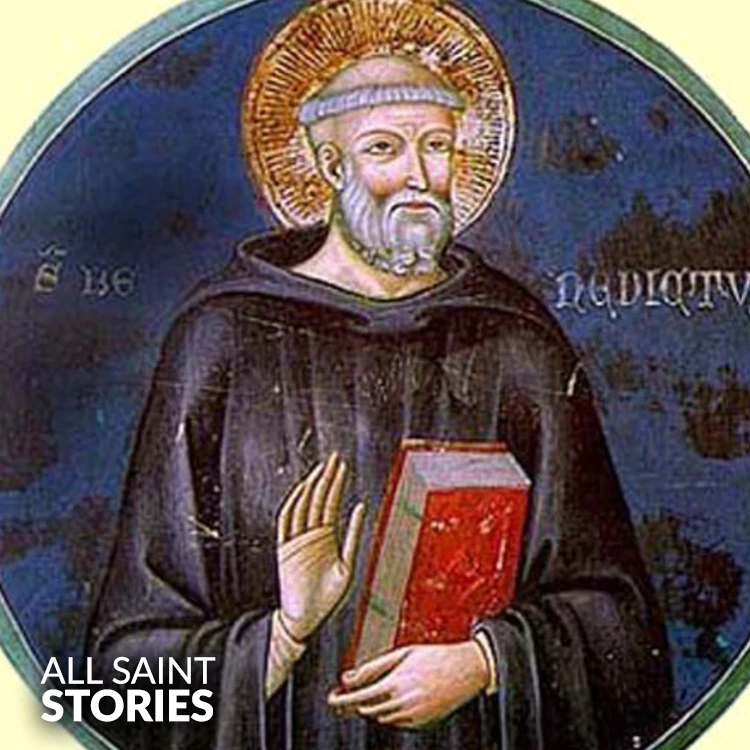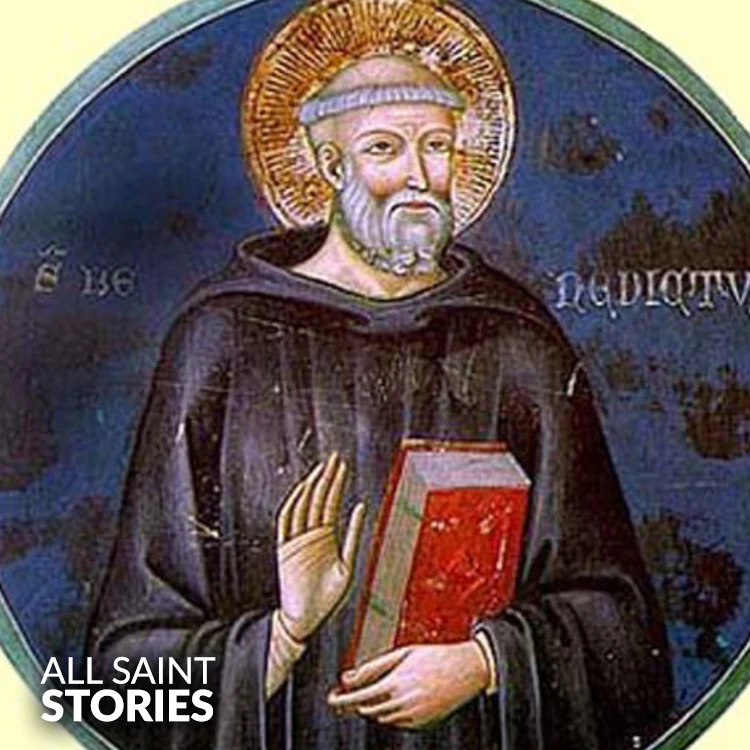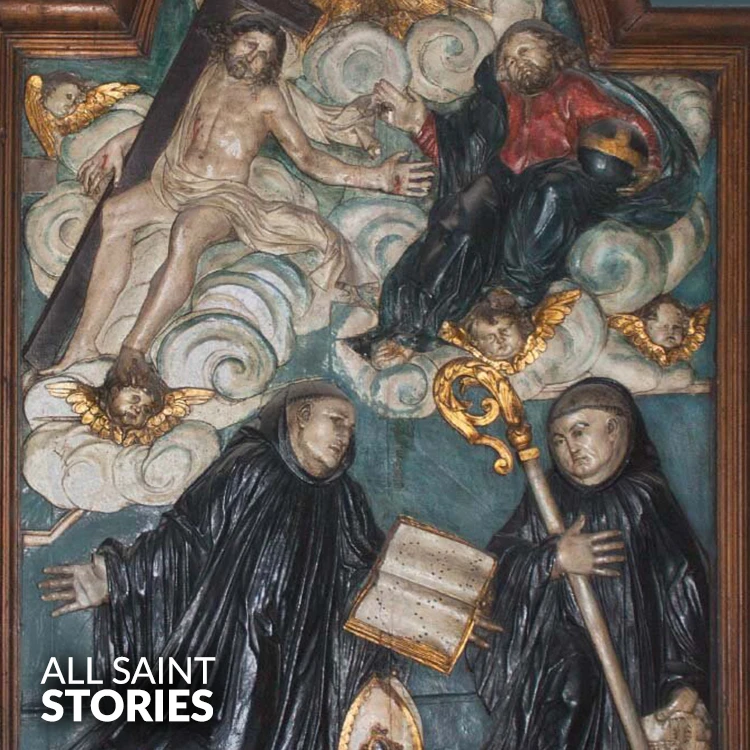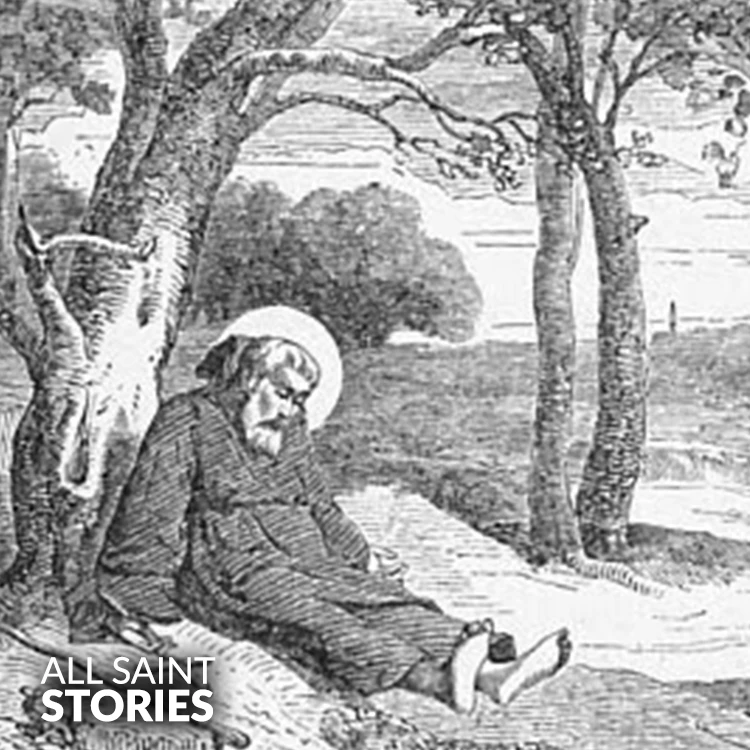Saint Benedict of Aniane, devoted servant of God, You who dedicated your life to the monastic path and the reform of the Church, Guide us with your wisdom and strength. Help us to live in faith, humility, and obedience, And to seek always the peace of Christ in our hearts. Intercede for us, that we may be steadfast in our faith, And grow in love and holiness each day. Through your example, may we learn to trust in God's will And follow it with courage and devotion. Amen.
ST. BENEDICT OF ANIANE
ST. BENEDICT OF ANIANE

St. Benedict of Aniane was a Benedictine monk and monastic reformer in the Carolingian Empire. He played a key role in standardizing monastic practices under Emperor Louis the Pious and worked to restore the Rule of St. Benedict as the foundation for monastic life. His influence helped shape Western monasticism.
St. Benedict of Aniane was born around 747 AD in the region of Septimania (modern-day southern France) into a noble Visigothic family. Originally named Witiza, he was raised at the royal court of King Pepin the Short and later served as a court official under Pepin’s son, Charlemagne. Despite his high position, he felt called to a deeper spiritual life and left the court to become a monk.
Benedict first joined the monastery of Saint-Seine in Burgundy, where he lived under the Rule of St. Benedict. However, he found that monastic discipline there had weakened, so he decided to establish his own monastery. Around 780 AD, he founded a monastic community at Aniane (near Montpellier), where he implemented a strict observance of the Benedictine Rule. His reforms emphasized communal prayer, manual labor, and study, and he worked to restore the purity of monastic life.
His reputation as a leader in monastic reform grew, and many sought his guidance. His influence reached Emperor Louis the Pious, Charlemagne’s son, who appointed him as an advisor on monastic affairs. Under Benedict’s leadership, a council was held at Aachen in 817, which established uniformity in monastic practices throughout the empire. This led to the widespread adoption of the Rule of St. Benedict as the standard for monasteries, strengthening monastic discipline across Europe.
Benedict’s reform efforts extended beyond his own monastery at Aniane. He played a crucial role in organizing monastic life in the Carolingian Empire, ensuring that monks lived according to the principles of prayer, obedience, and stability. He also wrote monastic rules and commentaries, helping to preserve and expand the monastic traditions of early Christianity.
In his later years, he continued his work at the newly established monastery of Kornelimünster near Aachen, where he remained a close advisor to Louis the Pious. He passed away on February 11, 821, leaving behind a legacy of monastic renewal that shaped medieval Christianity. His influence ensured that the Benedictine way of life became the dominant model for monasticism in the Western Church.
Video Not Found
The information on this website is compiled from various trusted sources. While we aim for accuracy, some details may be incomplete or contain discrepancies.
If you notice any errors or have additional information about this saint, please use the form on the left to share your suggestions. Your input helps us improve and maintain reliable content for everyone.
All submissions are reviewed carefully, and your personal details will remain confidential. Thank you for contributing to the accuracy and value of this resource.
Credits & Acknowledgments
- Anudina Visudhar (Malayalam) – Life of Saints for Everyday
by Msgr. Thomas Moothedan, M.A., D.D. - Saint Companions for Each Day
by A. J. M. Mausolfe & J. K. Mausolfe - US Catholic (Faith in Real Life) – Informational articles
- Wikipedia – General reference content and images
- Anastpaul.com – Saint images and reflections
- Pravachaka Sabdam (Malayalam) – Saint-related content and insights
We sincerely thank these authors and platforms for their valuable contributions. If we have unintentionally missed any attribution, please notify us, and we will make the correction promptly.
If you have any suggestion about ST. BENEDICT OF ANIANE
Your suggestion will help improve the information about this saint. Your details will not be disclosed anywhere.
© 2025 Copyright @ www.allsaintstories.com




 English
English
 Italian
Italian
 French
French
 Spanish
Spanish
 Malayalam
Malayalam
 Russian
Russian
 Korean
Korean
 Sinhala
Sinhala
 Japanese
Japanese
 Arabic
Arabic
 Portuguese
Portuguese
 Bantu
Bantu
 Greek
Greek
 German
German
 Dutch
Dutch
 Filipino
Filipino